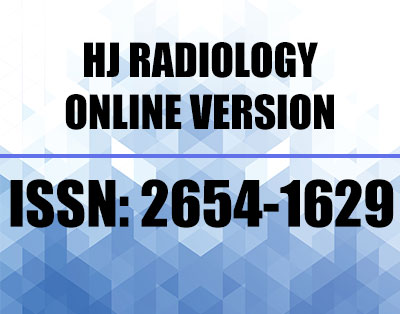Diagnostic accuracy of contrast-enhanced magnetic resonance imaging in diagnosing tuberculous meningitis keeping lumbar puncture as the gold standard
Abstract
Abstract: Tuberculous meningitis (TM), caused by Mycobacterium tuberculosis, is the most common kind of CNS tuberculosis (TB). If not treated effectively, TB meningitis can result in a higher rate of neurologic sequelae and death.
Objective: To evaluate the diagnostic accuracy of contrast-enhanced magnetic resonance imaging in diagnosing tuberculous meningitis keeping cerebrospinal fluid analysis as gold standard.
Methods: Our study comprised 109 individuals with clinical indications of tuberculous meningitis. Patients with cerebral haemorrhage, claustrophobia, or metallic implants in their bodies were not eligible. A 1.5 Tesla MRI machine was used to scan the brain starting from the vertex to the base of the skull. The MRI sequences collected and reviewed by radiologists for tuberculous meningitis were axial T2 turbo spin echo, axial T2 fluid attenuation inversion recovery (FLAIR), axial diffusion weighted imaging (DWI)—apparent diffusion coefficient (ADC), and axial T2 gradient echo (GRE). CSF analysis was performed on the patient following lumbar puncture.
Results: Out of 109 patients included in this study, 55(50.5%) were male and 54(49.5%) were females. On Contrast Enhanced FLAIR imaging patients showed abnormal features like meningeal enhancement(65.1%), tuberculomas(48.6%), hydrocephalus(47.7%) and infarts(26.6%). MRI showed a sensitivity of 76%, a specificity of 81%, a positive predictive value of 91.89% and a negative predictive value of 54.2%. Diagnostic accuracy of contrast enhanced magnetic resonance imaging in diagnosing TBM was found to be 77.1%.
Conclusion: Contrast Enhanced Magnetic Resonance Imaging has good sensitivity, specificity and diagnostic accuracy in diagnosing TB Meningitis.
Keywords:
[Tuberculous Meningitis, Magnetic Resonance Imaging, Diagnostic Accuracy, CSF analysis]
Keywords
Full Text:
PDFReferences
Marx GE, Chan ED. Tuberculous meningitis: diagnosis and treatment overview. Tuberculosis research and treatment. 2016 Oct;2011.
Schoeman JF, Donald PR. Tuberculous meningitis. Handbook of Clinical Neurology. 2013 Jan 1;112:1135-8.
Abdulaziz AT, Li J, Zhou D. The prevalence, characteristics and outcome of seizure in tuberculous meningitis. Acta Epileptologica. 2020 Dec;2(1):1-8.
Okaro AO, Eze CU, Ohagwu CC. Computed tomography and magnetic resonance diagnosis of brain infections: A clinical study with laboratory correlates. Eur J Sci Res. 2020;39(3):457-61.Palacios CF, Saleeb PG. Challenges in the diagnosis of tuberculous meningitis. Journal of Clinical Tuberculosis and Other Mycobacterial Diseases. 2020 Aug 1;20:100164.
Sobri M, Merican JS, Nordiyana M, Valarmathi S, Ai-Edrus SA. Neuroimaging features of tuberculous meningitis. Med J Malaysia. 2016 Mar 1;61(1):36-40.
Dian S, Hermawan R, van Laarhoven A, Immaculata S, Achmad TH, Ruslami R, Anwary F, Soetikno RD, Ganiem AR, van Crevel R. Brain MRI findings in relation to clinical characteristics and outcome of tuberculous meningitis. PLoS One. 2020 Nov 13;15(11):e0241974
Fayyaz J, Rehman A, Hamid A, Khursheed M, Zia N, Feroze A. Age related clinical manifestation of acute bacterial meningitis in children. Journal of Pakistan Medical Association. 2014;64(3):296.
Leiguarda R, Berthier M, Starkstein S, Nogues M, Lylyk P. Ischemic infarction in 25 children with tuberculous meningitis. Stroke. 2014 Feb;19(2):200-4.
Indrajit IK, Ganesan S. Magnetic resonance imaging in intracranial tuberculosis. Medical Journal Armed Forces India. 2017 Oct 1;57(4):292-7.
Daniel TM. New approaches to the rapid diagnosis of tuberculous meningitis. The Journal of infectious diseases. 2017 Apr 1;155(4):599-602.
Kumar R, Singh SN, Kohli N. A diagnostic rule for tuberculous meningitis. Archives of disease in childhood. 2019 Sep 1;81(3):221-4.
Upton CM, Wiesner L, Dooley KE, Maartens G. Cerebrospinal fluid and tuberculous meningitis. Clinical Infectious Diseases. 2023 Mar 29:ciad186.
Sakharkar S, Singh S, Ankar R, Raut A, Pohekar S, Khandar J, Sawarkar A, Alnewar P. Case Report on Tuberculosis Meningitis-A Nurses Perspective. Journal of Pharmaceutical Research International. 2021 Sep 22;33(44B):236-41.
Vaswani AK, Nizamani WM, Ali M, Aneel G, Shahani BK, Hussain S. Diagnostic accuracy of contrast-enhanced FLAIR magnetic resonance imaging in diagnosis of meningitis correlated with CSF analysis. International Scholarly Research Notices. 2014;2014.
Splendiani A, Puglielli E, Amicis RD, Necozione S, Masciocchi C, Gallucci M. Contrast-enhanced FLAIR in the early diagnosis of infectious meningitis. Neuroradiology. 2005 Aug;47:591-8.
Mubarak F, Anwer SS. Accuracy of hyperintense cerebrospinal fluid signals (CSF) on inversion recovery (IR) images of brain in the diagnosis of meningitis-a cost effective experience from third world country. Int Neuropsychiatr Dis J. 2014;2(6):266-73.
Galassi W, Phuttharak W, Hesselink JR, Healy JF, Dietrich RB, Imbesi SG. Intracranial meningeal disease: comparison of contrast-enhanced MR imaging with fluid-attenuated inversion recovery and fat-suppressed T1-weighted sequences. American journal of neuroradiology. 2005 Mar 1;26(3):553-9.
Ahmad A, Azad S, Azad R. Differentiation of leptomeningeal and vascular enhancement on post-contrast FLAIR MRI sequence: role in early detection of infectious meningitis. Journal of clinical and diagnostic research: JCDR. 2015 Jan;9(1):TC08.
DOI: http://dx.doi.org/10.36162/hjr.v10i1.644
Refbacks
- There are currently no refbacks.







